Often times, I am asked when someone buys a nut or fruit tree from me: “how long will it be until it produces nuts or berries or fruit”. Of course there are many sources of information available that provide estimates for the maturation of most trees, but in fact, the question is difficult to answer given the many variables to consider.
Choosing to plant a tree is like accepting and invitation to being surprised. Unlike most other ‘goods’ we can purchase, trees appear to have a mind of their own —for indeed they do! And even when planted in the best of situations — where the conditions meet all of their apparent requirements for optimal ‘growth’ — it is still possible (although the odds are lessened) that our beloved (and often expensive) tree might not thrive or even survive. Planting and caring for a tree teaches us to expect and even embrace the unexpected.
But for me, the question of how quickly a tree will produce nuts or fruit is not the most important, or the most interesting question to be pondering. So, I always try and paint a broader, more vivid picture of what to expect by extolling a range of delightful possibilities that someone daring enough to plant a tree might get to experience. These expectations follow a trajectory of emergence and relationship building that bind us —the human tree-planters — together with our trees, as they (and we) grow and change over many years. For indeed, that is what we are talking about — many years! There will be many years of commitment and care —watering (especially in the first summer), mulching, and ensuring our tree has access to quality soil and nutrients. There will be years of waiting and watching to learn how our trees respond to their surrounding and to us. We will spend years anticipating the expected and unexpected vagaries of each season (especially as the earth’s climate changes) that could set a tree back: such as late spring frosts, summer droughts, infestations of disease, insects, or deer, wind and even fire! But, along with all the worry and dedication there comes many moments of wonder, when we notice the glorious small things.
Then, one fine day you suddenly notice that the tree seedling you planted and nurtured all those many years ago is taller than you are. That the bark has changed from a smooth juvenile sheen, to a darkening grey and roughened adult coat. That certain birds prefer to visit your tree and roost in the branches. That your tree now casts a shadow. And then, suddenly, there comes the season when you behold the first blossom buds forming, and you know that you and your tree have arrived —together — at the long awaited year of fruiting and a promised harvest. The harvest, however, is not the ultimate reward for your perseverance and loyalty to each other. The harvest is merely one more step in your journey together; one more event in your shared and unfolding story. This relationship of mutuality and passion builds slowly, steadily, and surely - poco a poco.
The following is a photo essay of the black walnut (juglans nigra) grove I began planting, shortly after arriving at our Cape Breton homestead in the fall of 2018. As I described in Part one of this series on Forest Gardening, my partner and I had purchased a once-upon-a-time farmstead, whose long abandoned hay fields were trying their darnedest to return to being a forest. Much of the field directly behind the old farm-house was well established in an array pioneer flora, but the small section where I chose to plant my black walnut saplings —that I had started from seed that spring — was still relatively free from the encroaching hawthorns (Crataegus spp.), white spruce (Picea glauca), wild apple (malus spp.), bayberry (Myrica pensylvanica), chokecherry (Prunus virginiana), and serviceberry trees (Amelanchier spp.). It seemed like the perfect location, as my young walnut trees would have little in the way of competition from the wilding trees.
While black walnut is going to be the main tree (canopy) in this grove, I intend to plant other botanicals to fill the vertically layered scheme of a forest garden design: canopy, understory…..
The area of my future black walnut grove (as depicted in the photos below) is approximately one acre, with an open, north-facing slope bordered by 2 shallow ravines, that only rarely have a water flow. Regenerating the patterns of water flow on this land is a long range objective for me.



In total we planted about a dozen black walnut trees that first day!
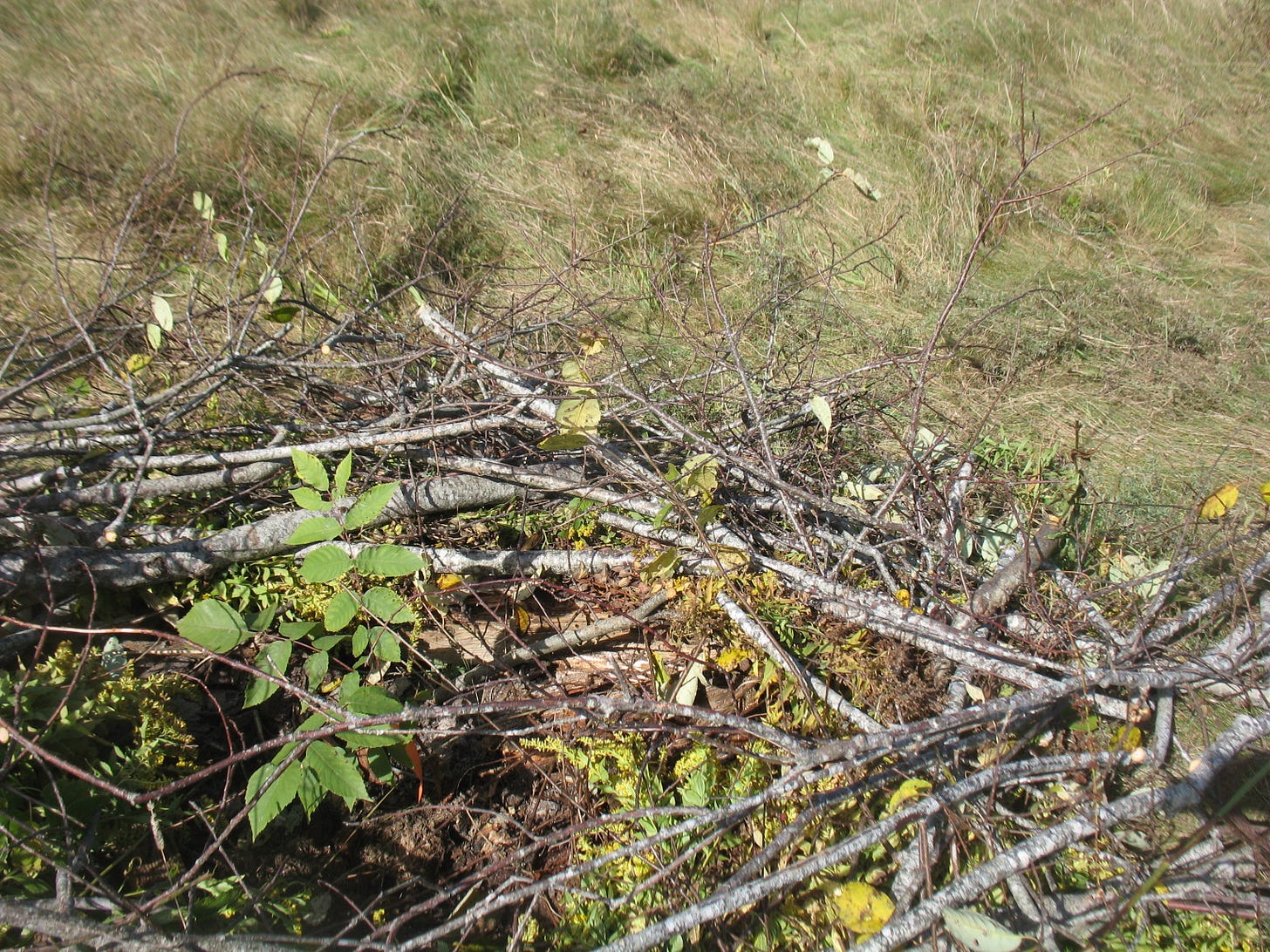

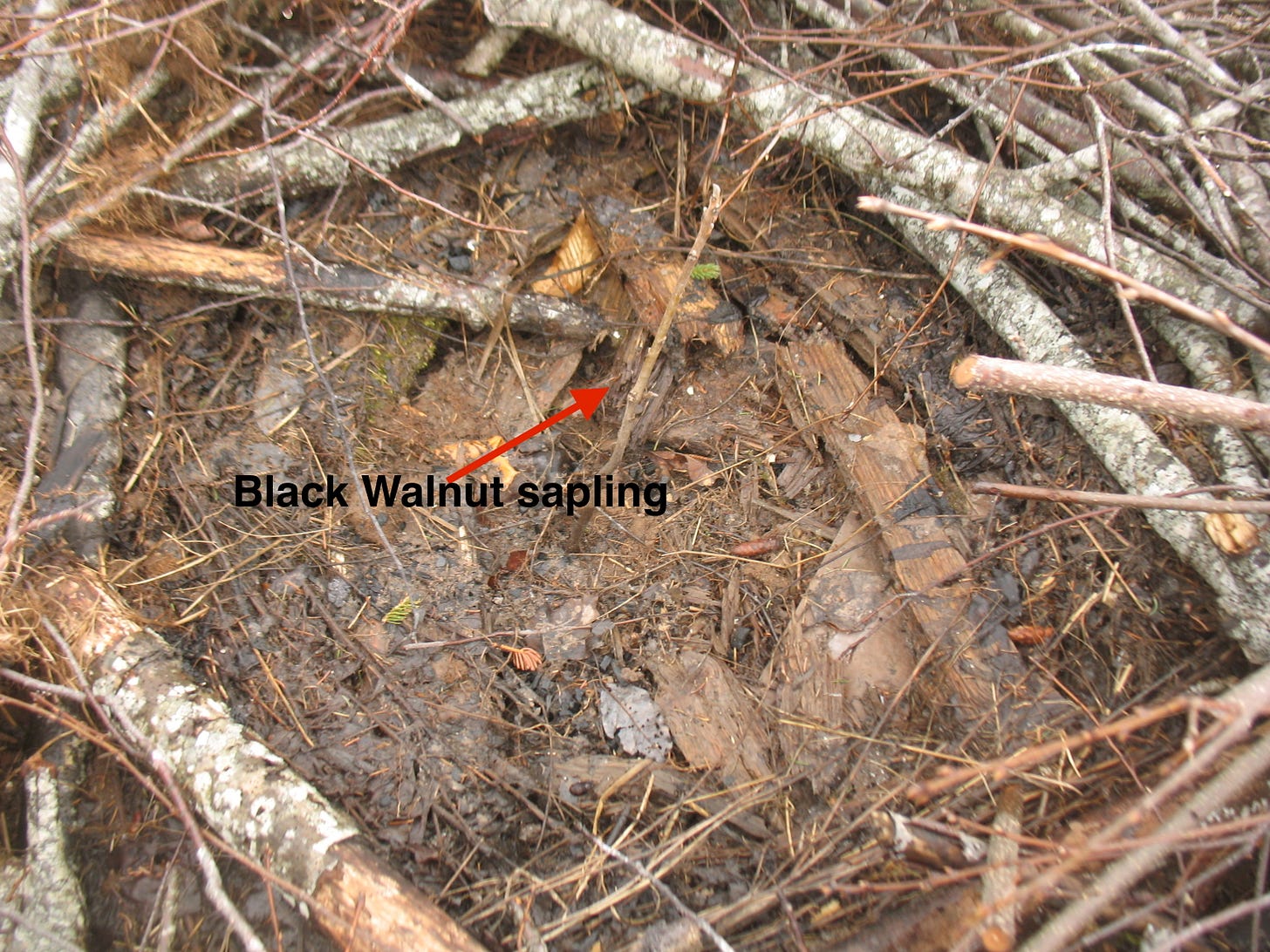
That first spring (2019) here, we got a late frost. Since my black walnuts had already begun to unfurl their leaf buds, the first set of leaves were fried by the frost. I was worried the trees had been killed, but after a couple of weeks of looking pretty sorry, they did grow a new set of leaves. But the trees had clearly been set back several weeks of growth, and they reestablished themselves, they also grew new ‘leaders’ branches, where the first terminal bud had been destroyed by frost. Now my trees would no longer be able to grow straight, but would always have a forked trunk, unless I pruned to establish a single leader again. Late spring frosts are a significant liability for fruit and nut trees in Cape Breton, especially since our homestead was in a bit of a valley — a frost pocket.

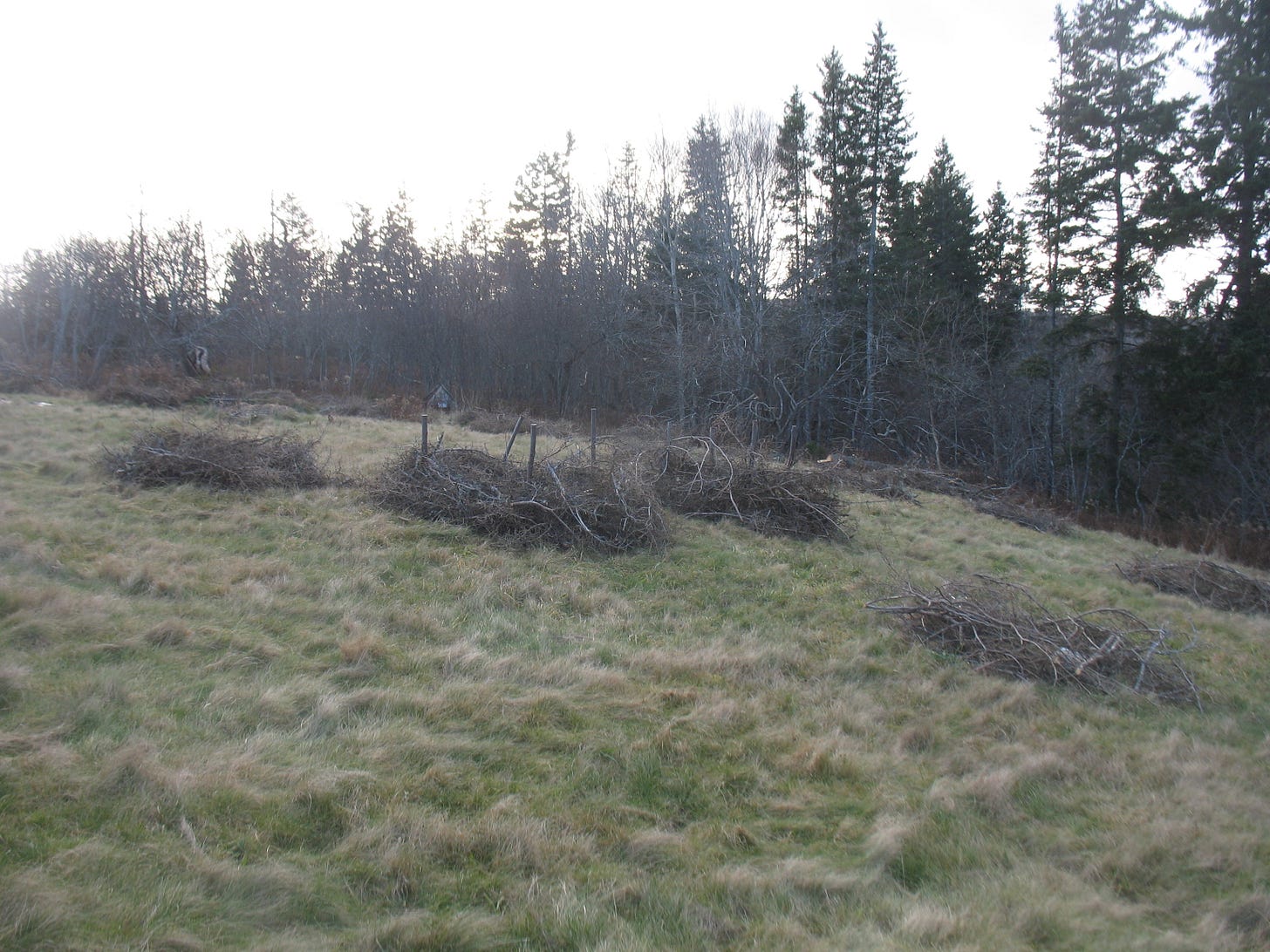
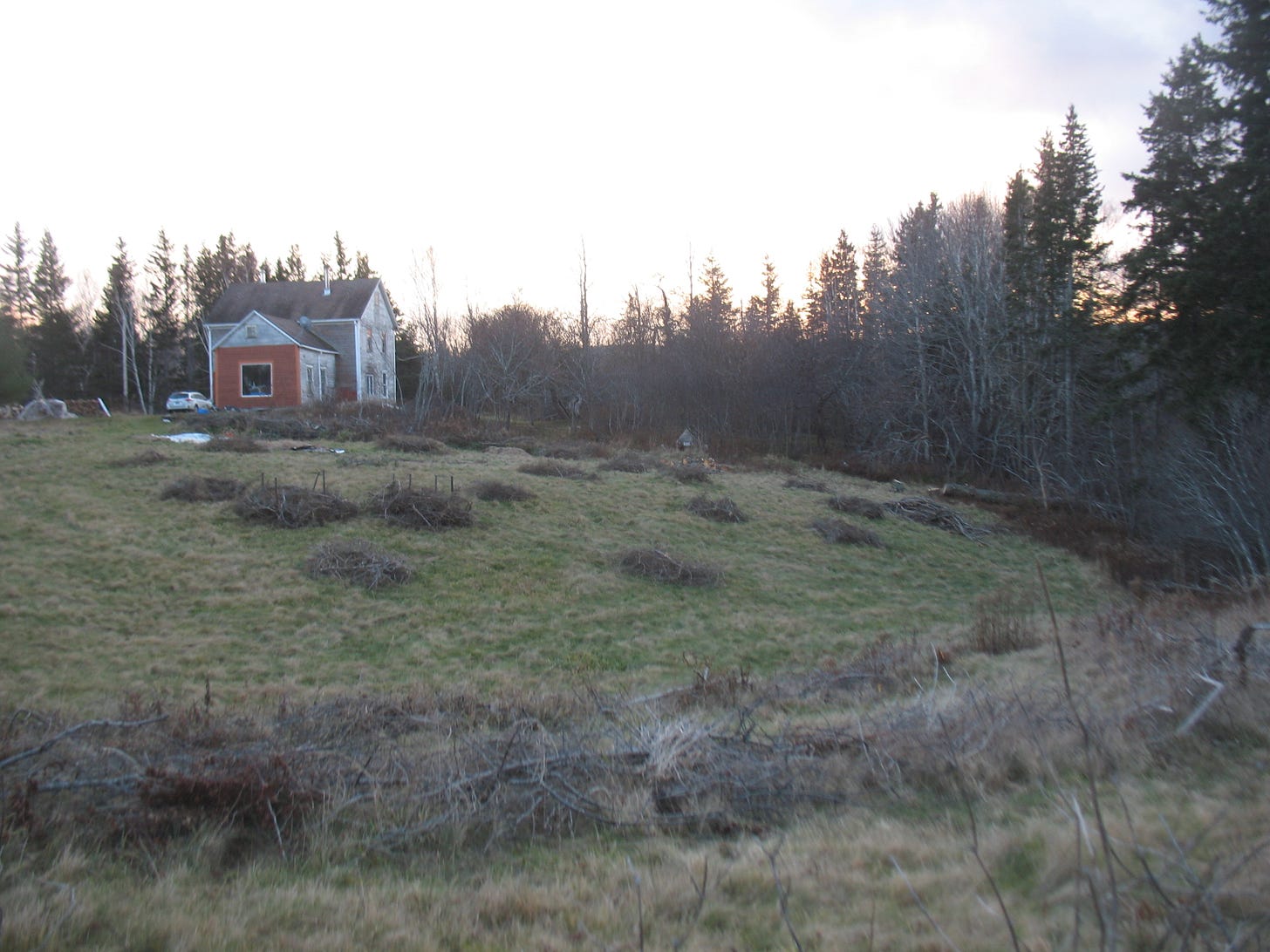
In the spring of 2020 my young trees got hit again by a late spring-frost. I was beginning to understand the impact of planting trees at a location where I had not taken the time to observe a whole year’s worth of seasonal change. But I was still hopeful that the black walnuts et al, would eventually grow tall enough that they would not be as affected by the frosts, which tended to only damage plants close to the ground.

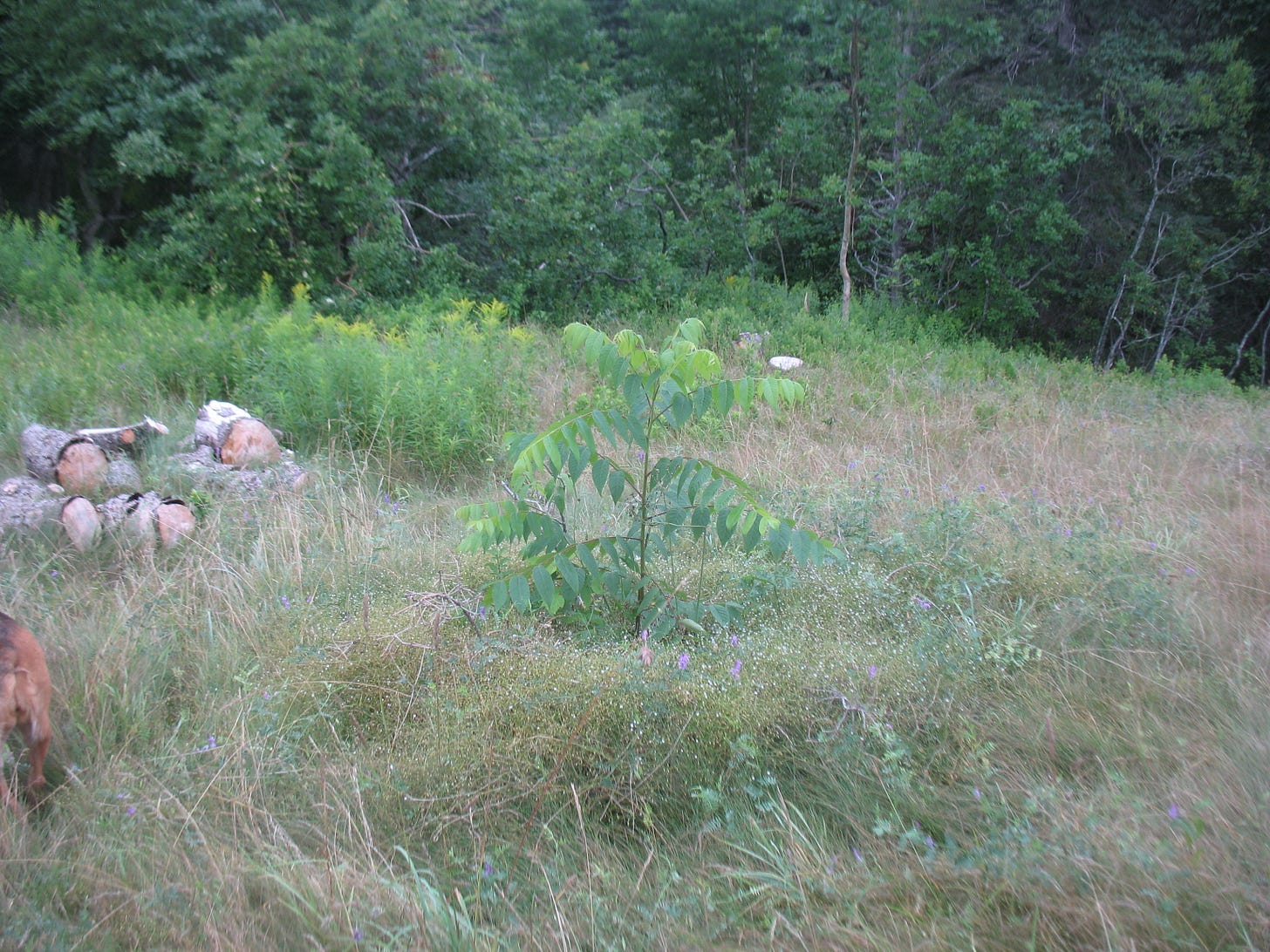
I’ll end this segment of the photo essay here, as I am nearing the allowable length limit. I will continue the photo essay (years 2021- present 2023) shortly. I hope you have enjoyed taking this little trip down memory lane with me, and that you feel inspired to take on planting more trees, or even establishing a forest garden. As you can see, after only two years the trees have really made an impact on the land here, and I can already well imagine how my forest garden will look as it becomes more mature. There is still plenty of room in this one acre space to add more trees, shrubs and plants, which I intend to do! Until next time - many tree blessings.

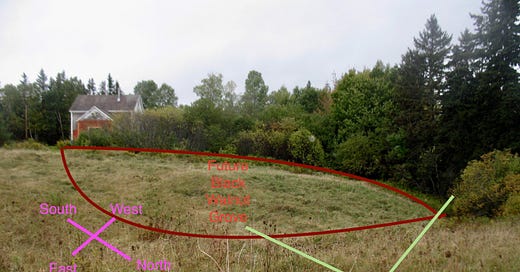



The photos really help visualize the process!
I so enjoyed reading this story and feeling your dedication, passion, and knowledge. You evoke the journey of tree planting so well - all the parallels in our lives, from entering into any committed relationship or project. Really inspiring and helpful!